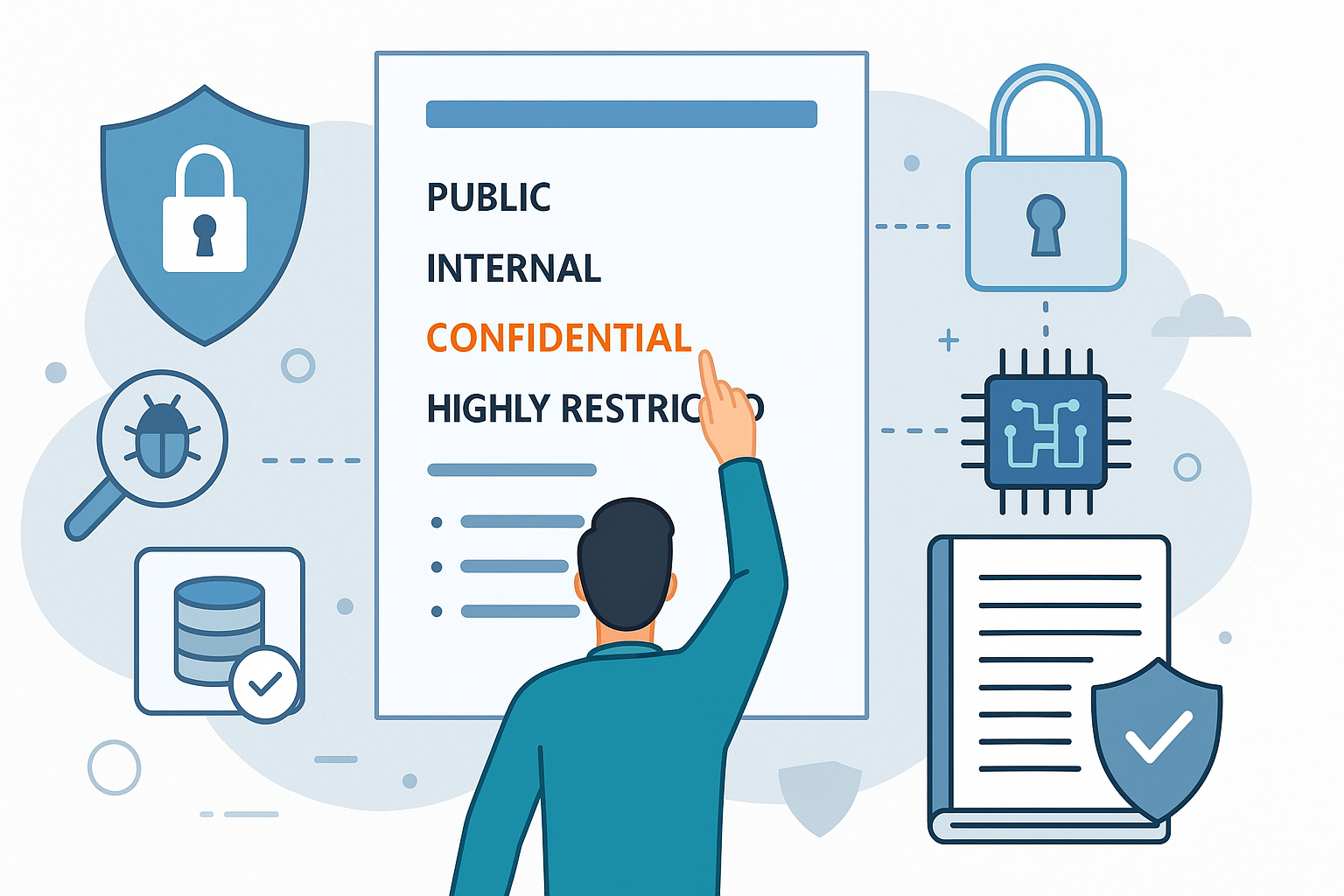Introduction to Force.com Sites – Overview
In the ever-evolving realm of Salesforce development, Force.com Sites stand as a powerful tool to extend the reach of your applications beyond the traditional Salesforce user base. Let's embark on an overview of this feature that empowers you to create public-facing websites and applications seamlessly integrated with your Salesforce data.
Force.com Sites provides a gateway to bring your Salesforce data and functionality to the broader audience on the internet. It's a revolutionary feature that enables you to create public websites, portals, and applications, allowing users who aren't traditional Salesforce users to interact with your Salesforce data securely and controlled.
Introduction to Force.com Sites – Overview
Force.com sites allow users to build public websites by utilizing visual force pages and applications on the force.com platform, seamlessly connecting with salesforce.com. Since Force.com sites are hosted on Force.com servers, data integration is easy.
Force.com Sites enables users to build and deliver public websites and applications directly from the Force.com platform. Force.com Sites are created utilizing Apex and Visualforce while including basic HTML markup, JavaScript, CSS, and Flash to generate an aesthetically engaging user interface.
· We can create a Force.com Site with our domain name.
· Corporate websites or intranets, Ecommerce applications, and simple microsites can be built using force.com sites.
· Force.com Sites is available for most versions, although it is essential to note that there are limitations in bandwidth and usage.
Now we shall discuss advantage of Force.com sites in salesforce. To have a comprehensive understanding salesforce feature, you can enroll in Salesforce course, which help you learn
Advantages of using Force.com sites in Salesforce
· Force.com Sites enable public access to Salesforce data, allowing external users, such as customers and partners, to interact with specific information without requiring a Salesforce login.
· Create a seamless user experience with custom domains, reinforcing brand identity and establishing trust with users interacting with your public-facing applications.
· Leverage the seamless integration between Force.com Sites and Salesforce data, ensuring real-time updates and synchronization between your public site and Salesforce records.
· Design and develop custom pages tailored to your needs, providing a user-friendly interface for tasks like lead capture, event registration, or knowledge base access.
· Implement robust security controls to define what data and functionality are exposed on your public site, maintaining the confidentiality and integrity of your Salesforce information.
· Foster community engagement by creating customer portals, partner communities, or public knowledge bases, enhancing collaboration and communication beyond your internal Salesforce users.
· Benefit from the scalability and performance of the Salesforce platform, ensuring that your public-facing applications can handle varying levels of traffic and maintain optimal performance.
· Avoid additional infrastructure and hosting costs by utilizing Force.com Sites, as the platform seamlessly integrates with Salesforce and eliminates the requirement for separate web hosting services.
How do you create force.com sites?
Before developing Force.com sites, it is necessary to establish the Force.com domain, which consists of a distinct subdomain prefix combined with the force.com extension. The Force.com domain name is utilized for all websites created within the salesforce.com platform.
Example:- https://100bucks-developer-edition.ap1.force.com.
https://100bucks-developer-edition.ap1.force.com is the Force.com domain name we created in salesforce.com, and we will develop crmsalesforcetraining Force.com site.
Follow the steps given below to create Force.com sites in Salesforce.
To create a Force.com website, select Setup=>Build=>Develop=>Sites.
Now click on the New Button.
Now, a new page will appear where we must enter information such as:
· Site label
· Site name
· Site Description
· Site contact
· A default web address
· Active
· Active site home page
· Inactive site home page
· Site template
· Site robot.txt
· Site favorite icon
· Analytics tracking code,
· URL rewriter class
· Enable feeds
· Clickjack protection level
· Require secure connections(HTTPS).
Use the lookup field to select the Visualforce page.
Here, we are creating a crmsalesforcetraining site, so I am giving the site name “crmsalesforcetraining“.
As illustrated above, the first part of the URL in the default web address is the Force.com domain name, and the second part is the Force.com site name. After entering all of your information, click Save.
Managing Force.com Site
We generated a new Force.com site in the first section; now, we must activate the recently created site in salesforce.com.
· To activate the Force.com site, select Setup=>Build=>Develop=>Sites.
· Now, we can view all sites hosted on our force.com domain.
· To modify the site's status, select Edit; to activate the site, select Activate.
We have successfully created crmsalesforcetraining Force.com site in salesforce.com.
As we navigate the expansive capabilities of Force.com Sites, envision a Salesforce ecosystem extending its reach far beyond conventional users. This feature opens doors to innovative solutions, fostering collaboration, engagement, and efficiency.
The journey into Force.com Sites promises a landscape where Salesforce manages internal processes and becomes a dynamic force in connecting organizations with the world. Let's explore functionalities, configurations, and best practices to unleash the full potential of Force.com Sites in your Salesforce development odyssey!
Find a course provider to learn Salesforce
Java training | J2EE training | J2EE Jboss training | Apache JMeter trainingTake the next step towards your professional goals in Salesforce
Don't hesitate to talk with our course advisor right now
Receive a call
Contact NowMake a call
+1-732-338-7323Take our FREE Skill Assessment Test to discover your strengths and earn a certificate upon completion.
Enroll for the next batch
Salesforce Course Online Training
- Dec 15 2025
- Online
Salesforce Course Online Training
- Dec 16 2025
- Online
Salesforce Course Online Training
- Dec 17 2025
- Online
Salesforce Course Online Training
- Dec 18 2025
- Online
Salesforce Course Online Training
- Dec 19 2025
- Online
Related blogs on Salesforce to learn more

INTRODUCTION TO CLINICAL RESEARCH
Learn the fundamentals of clinical trials, and eight phases of the clinical research process.

Describe when and why to use the Force.com code
Discover how to leverage the power of Apex code to automate business processes, enhance user experience, and improve data quality in your Salesforce organization.

Features of Force.com code and distinguish between Force.com code and other programming languages.
Learn how to seamlessly integrate Force.com pages into your Salesforce applications to enhance user experience and discover the steps to create, customize, and deploy custom pages that meet your specific business needs.

List and Describe Syntax Features of Force.com Code
Master the syntax features of Force.com code and description for each feature.
An Introduction: Integrating with the Salesforce Force.com Platform
Unlock the full potential of your Salesforce implementation by integrating it with external systems and applications.

Describe How to Incorporate Force.com Pages into Force.com Applications
Learn how to seamlessly integrate Force.com pages into your Salesforce applications to enhance user experience and discover the steps to create, customize, and deploy custom pages that meet your specific business needs.

Describe the save execution order and use of before and after triggers
Learn how to write triggers that execute at the right time to meet your specific business needs

Debugging, Testing, and Monitoring in Force.com: A Comprehensive Guide
Explore the essential techniques for debugging, testing, and monitoring your Force.com applications.
A Comprehensive Guide to Managing Static Resources in Salesforce
We have discussed the types of Static Resources, how to Create & Use Static Resources and best Practices for Managing Static Resources in Salesforce
Distinguish between standard controllers, custom controllers, and extensions
This guide covers the features, benefits, and use cases for each type of controller, helping you to build more efficient and effective Salesforce applications.
Latest blogs on technology to explore

From Student to AI Pro: What Does Prompt Engineering Entail and How Do You Start?
Explore the growing field of prompt engineering, a vital skill for AI enthusiasts. Learn how to craft optimized prompts for tools like ChatGPT and Gemini, and discover the career opportunities and skills needed to succeed in this fast-evolving indust

How Security Classification Guides Strengthen Data Protection in Modern Cybersecurity
A Security Classification Guide (SCG) defines data protection standards, ensuring sensitive information is handled securely across all levels. By outlining confidentiality, access controls, and declassification procedures, SCGs strengthen cybersecuri

Artificial Intelligence – A Growing Field of Study for Modern Learners
Artificial Intelligence is becoming a top study choice due to high job demand and future scope. This blog explains key subjects, career opportunities, and a simple AI study roadmap to help beginners start learning and build a strong career in the AI

Java in 2026: Why This ‘Old’ Language Is Still Your Golden Ticket to a Tech Career (And Where to Learn It!
Think Java is old news? Think again! 90% of Fortune 500 companies (yes, including Google, Amazon, and Netflix) run on Java (Oracle, 2025). From Android apps to banking systems, Java is the backbone of tech—and Sulekha IT Services is your fast track t

From Student to AI Pro: What Does Prompt Engineering Entail and How Do You Start?
Learn what prompt engineering is, why it matters, and how students and professionals can start mastering AI tools like ChatGPT, Gemini, and Copilot.

Cyber Security in 2025: The Golden Ticket to a Future-Proof Career
Cyber security jobs are growing 35% faster than any other tech field (U.S. Bureau of Labor Statistics, 2024)—and the average salary is $100,000+ per year! In a world where data breaches cost businesses $4.45 million on average (IBM, 2024), cyber secu

SAP SD in 2025: Your Ticket to a High-Flying IT Career
In the fast-paced world of IT and enterprise software, SAP SD (Sales and Distribution) is the secret sauce that keeps businesses running smoothly. Whether it’s managing customer orders, pricing, shipping, or billing, SAP SD is the backbone of sales o

SAP FICO in 2025: Salary, Jobs & How to Get Certified
AP FICO professionals earn $90,000–$130,000/year in the USA and Canada—and demand is skyrocketing! If you’re eyeing a future-proof IT career, SAP FICO (Financial Accounting & Controlling) is your golden ticket. But where do you start? Sulekha IT Serv

Train Like an AI Engineer: The Smartest Career Move You’ll Make This Year!
Why AI Engineering Is the Hottest Skillset Right Now From self-driving cars to chatbots that sound eerily human, Artificial Intelligence is no longer science fiction — it’s the backbone of modern tech. And guess what? Companies across the USA and Can

Confidence Intervals & Hypothesis Tests: The Data Science Path to Generalization
Learn how confidence intervals and hypothesis tests turn sample data into reliable population insights in data science. Understand CLT, p-values, and significance to generalize results, quantify uncertainty, and make evidence-based decisions.